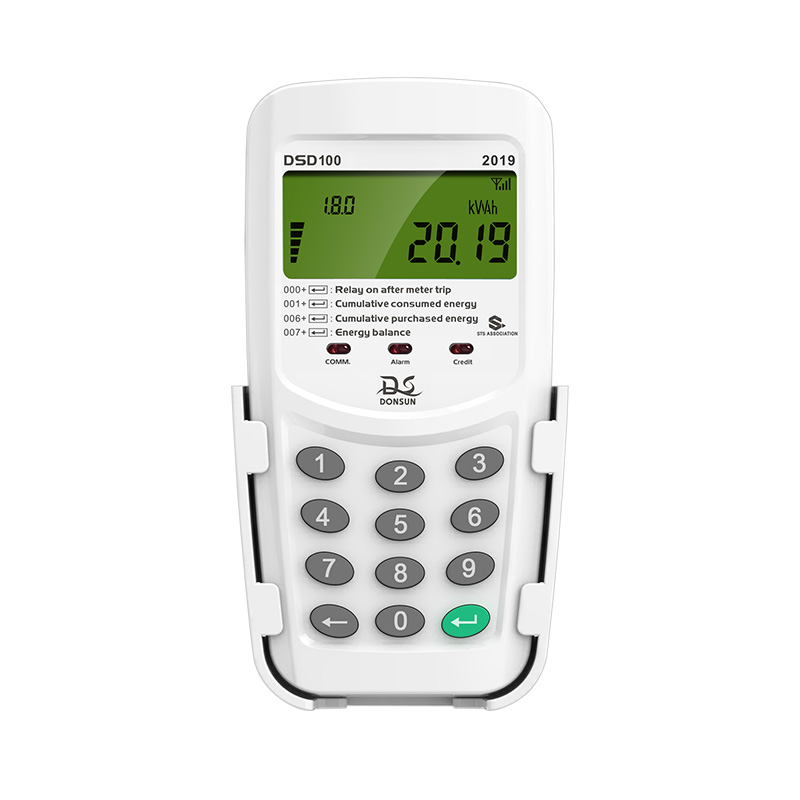Introduce the Prepayment Energy Meter in detail
2023-10-18
The Prepayment Energy Meter, also known as a prepaid energy meter or pay-as-you-go energy meter, is an advanced utility metering system that allows consumers to manage and control their energy usage by prepaying for electricity or gas services. It is a modern alternative to the traditional postpaid billing system where consumers are billed monthly or periodically based on their energy consumption.
The Prepayment Energy Meter operates through a combination of hardware and software components. The hardware typically consists of a specialized energy meter installed at the consumer's premises, which is connected to the utility company's network. This meter is designed to accurately measure and record the amount of electricity or gas consumed.
The software component includes a user interface, which can be accessed through various means such as a dedicated meter display, mobile application, or a web portal. This user interface allows consumers to monitor their energy consumption in real-time, view their account balance, and make payments conveniently.
Here's how the Prepayment Energy Meter works:
1. Account Creation: Consumers need to establish an account with the utility company to set up the prepayment system. This involves providing necessary information, such as contact details, address, and sometimes identification documents.
2. Token Generation: Once the account is created, the utility company generates a unique token or code, which represents a specific amount of energy credit. The token can be in the form of a numeric code or a smart card.
3. Token Input: Consumers input the token into the Prepayment Energy Meter using the provided interface. This can be done by entering the code manually, scanning a barcode, or inserting a smart card into the meter.
4. Energy Credit: When the token is successfully inputted, the energy credit associated with the token is added to the consumer's account balance. The meter deducts energy consumption from this balance in real-time.
5. Real-time Monitoring: The Prepayment Energy Meter continuously monitors the energy consumption and displays it to the consumer in real-time. This allows consumers to track their usage patterns and make informed decisions to control their energy expenditure.
6. Low Credit Notifications: When the account balance reaches a certain threshold, the meter provides low credit notifications to alert the consumer. This gives them an opportunity to top up their account and avoid service interruption.
7. Top-up Options: Consumers can conveniently add credit to their account by making payments through various channels provided by the utility company. This can include online payment systems, mobile payment apps, bank transfers, or physical top-up points.
8. Usage Reports: The Prepayment Energy Meter generates periodic usage reports, which consumers can access through the user interface. These reports provide insights into energy consumption patterns, helping consumers identify areas where they can reduce their usage and save energy.
Benefits of Prepayment Energy Meters:
1. Energy Management: Prepayment meters enable consumers to have better control over their energy consumption and expenses. They can monitor their usage in real-time and adjust their behavior accordingly to save energy and reduce costs.
2. Budgeting and Transparency: With prepayment meters, consumers can plan and budget their energy expenditure more effectively. The real-time monitoring and account balance visibility provide transparency, allowing consumers to make informed decisions about their energy usage.
3. Debt Prevention: Prepayment energy meters eliminate the risk of accumulating energy debts. Since consumers need to prepay for their energy, they are less likely to fall behind on payments or incur arrears.
4. Convenience: The flexibility of various top-up options, such as online payments and mobile apps, makes the process of adding credit to the account convenient and hassle-free.
5. Energy Conservation: By providing real-time information on energy consumption, prepayment meters encourage consumers to adopt energy-saving practices and promote a more sustainable lifestyle.



